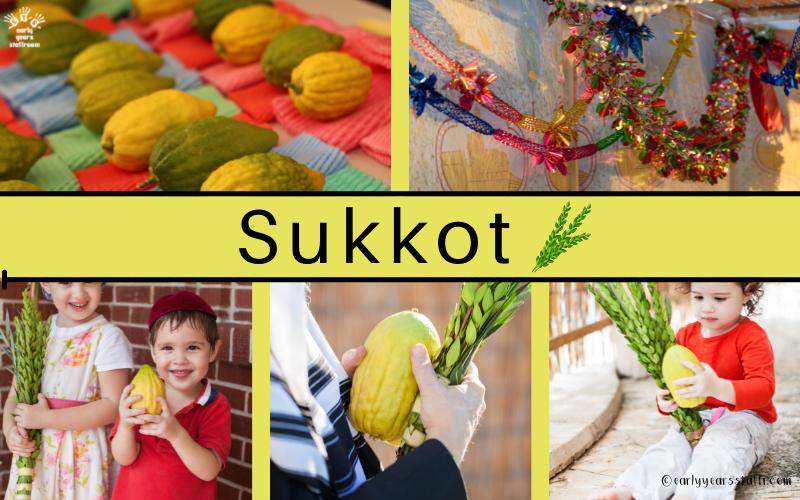

Sukkot is a Jewish festival that commemorates the time when the Israelites wandered in the desert for 40 years after their exodus from Egypt, living in temporary shelters called sukkot (singular: sukkah).
Celebrated for seven days, usually in late September or October, Sukkot is a time to give thanks for the harvest and remember the Israelites’ experiences in the desert.
In an early years settings celebrating Sukkot can be an engaging way to teach young children about Jewish traditions and customs.
Here are some ideas for celebrating Sukkot in an early years education setting:
Building a Sukkah: Construct a small, child-friendly sukkah using wooden poles, branches, or PVC pipes. Cover the roof with leafy branches, allowing some sunlight to enter. Decorate the sukkah with fruit, paper chains, and drawings made by the children. Teach the children about the purpose of the sukkah and encourage them to spend time inside it, eating snacks, reading stories, or engaging in other activities.
Food and Harvest: Discuss the importance of the harvest and introduce children to traditional Sukkot foods, such as challah, stuffed vegetables, and fresh fruits. Encourage children to taste these foods or incorporate them into cooking activities.
Art Projects: Organize craft activities related to Sukkot, such as making paper chains to decorate the sukkah, creating paper fruit and vegetable cutouts, or painting pictures of sukkot.
By celebrating Sukkot in an early years setting, educators can help children develop an appreciation for Jewish customs and traditions and create a foundation for understanding the importance of gratitude and community celebrations.
Remember to adapt the activities to the age and abilities of the children in your care to ensure a safe and enjoyable learning experience.